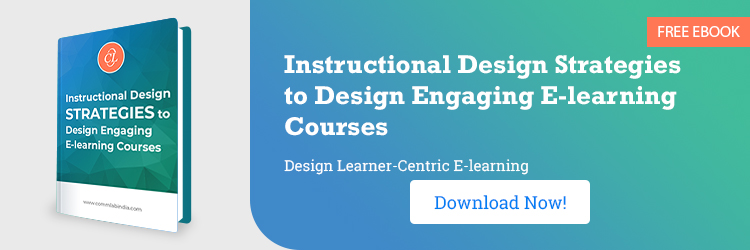The core job of instructional designers is setting learning objectives that identify the content and activities of a course. Instructional designers have for long fallen back on the celebrated Bloom’s classification system, created for traditional classroom training, to define their learning objectives and create courses that meet the needs of learners.
This classification, which divided the cognitive domain into six categories (a set of nouns or cognitive processes), with each representing a cognitive skill level and activity, continues to be one of the most universally applied methods of organizing thinking skills, from the most basic to higher order levels.
Taking the differing requirements of e-learning and evolving training pedagogies into account, the classification was reconstructed by Loren Anderson, a former student of Bloom in 2001, to incorporate modern approaches of training that reflect current needs. The original classification was revised as follows:
| 原始(名词) | Revised (Verbs) | What the New Term Means |
| Knowledge | Remembering | Recalling information–Recognizing, listing, describing, retrieving, naming, finding |
| Comprehension | Understanding | Explaining ideas or concepts–Interpreting, summarizing, paraphrasing, classifying, explaining |
| Application | Applying | Using information in another familiar situation–Implementing, carrying out, using, executing |
| Analysis | Analyzing | Breaking information to explore understandings and relationships–Comparing, organizing |
| Synthesis | Evaluating | Justifying a decision or course of action–Checking, hypothesizing, critiquing, experimenting |
| Evaluation | Creating | Generating new ideas, products, or ways of viewing things–Designing, constructing, planning |
How is the Revised Bloom’s Classification Different?
Taking Anderson’s revision of Bloom’s Taxonomy, we can identify the following main changes:
- One of the first important changes was the change in six major categories from nouns to verbs. The change to verb forms came from the understanding that thinking is an active and continuous process, and verbs as such describe actions best.
- A few categories were renamed. Arguing that the previous category ofknowledgedid not correctly describe a category of thinking, it was replaced withremembering. Likewise, in an attempt to correctly reflect the nature of thinking of each category, terms such ascomprehensionandsynthesiswere replaced withunderstandingandcreating,respectively.
- Two subcategories – Synthesis and Evaluation were reorganized.
- As shown in the table, the revised taxonomy emphasizes the explanation and description of subcategories that greatly assist IDs in the thinking process, at all levels.
- In line with the concept of using action words for process descriptions, a few subcategories of the six major categories were also changed to verb forms. Thus the ‘Creating’ category includes subcategory activities such as constructing, designing, devising, inventing, making, planning, and producing.
For more information on the fundamentals of learning objectives and how Bloom’s taxonomyhelps set performance-based learning objectives, download our eBook.
How is the Revised Bloom’s Taxonomy Used?
Bloom’s taxonomy and its various revised versions basically refer to the increasing mental complexity of processing thinking processes and how this can help in creating an effective learning experience. The best way to use the revised Bloom’s taxonomy is by developing measurable learning objectives using content, categorizing these objectives, and developing appropriate activities for the categories. Let’s briefly summarize how IDs can use the revised taxonomy to develop their eLearning andblended learningcourses.
- Remembering,listed as the first level of learning, refers to remembering concepts through the use of PDF attachments, step-by-step lists, and webinars.
- Understandingis taught through lectures, step-by-step user guides, PDF files, and by incorporating activities such as click and drag.
- Applyingrefers to a level where learners, understanding concepts from previous levels, start doing, which in e-learning is mostly through virtual classrooms, or simulations.
- Analyzing, evaluating, and creating接下来的三个水平很难在哪里develop activities and require a lot of thought. A blended learning approach with discussion boards for analyzing activities, short videos, discussion forums, etc., are the various options that need to be integrated into e-learning, to help learners attain these levels.






